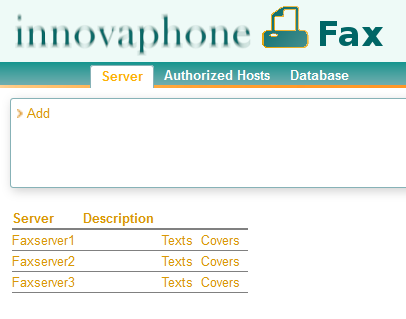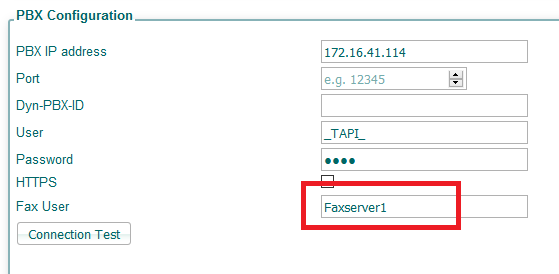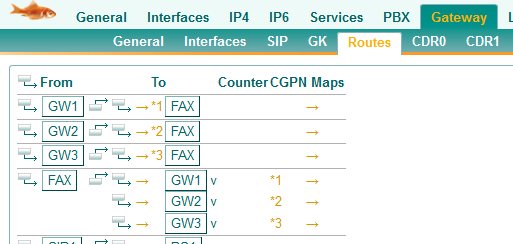Howto:Multiple faxserver instances sharing a FAX interface: Difference between revisions
mNo edit summary |
|||
| Line 39: | Line 39: | ||
[[Howto:Faxserver_with_Exchange | Howto: Faxserver with Exchange]] | [[Howto:Faxserver_with_Exchange | Howto: Faxserver with Exchange]] | ||
[[Category:Howto|{{PAGENAME}}]] | |||
Latest revision as of 11:52, 8 January 2020
This document explains the configuration of multiple faxserver instances of the innovaphone fax solution using the same FAX Interface at an Innovaphone Gateway.
Summary
In case you have multiple faxserver instances but just a single FAX Interface and those faxserver instances should share this FAX Interface you might run into the problem of receiving the error message “sfftobmp failed, exit code 2”. This wiki article should explain how to salvage the situation.
Applies To
This information applies to the Linux application innovaphone Fax V10 and innovaphone firmware V10 and later.
Configuration
First of all let’s take a look at the Linux AP. In my case I have three different faxserver instances.
Each faxserver instance is monitoring a different faxserver gateway object in the PBX. In the case of the screenshot it’s the Faxserver1 gateway object.
The next steps have to be done at the PBX. We need to create the corresponding faxserver gateway object. As you see in the screenshot they have an active internal registration. 3 different GW Interface are registered at those gateway object. (don’t forget to turn on T38).
Furthermore the Query User (_TAPI_) needs to be active in the same group as the faxserver gateway objects. The tricky part is done in the routing table as you can see in the screenshot. We are adding prefixes in the route to the FAX Interface and we are subtracting the prefix of the CGPN in the outbound route. Verify CGPN needs to be active to route those calls correctly.
In the end don’t forget to set T38 or Audio FAX support at the FAX interface.
The purpose of the Prefix
Let me give a quick explanation why you should configure the prefixes in the routing table. For this to understand you need to know that an outgoing fax call originates in the PBX. The faxserver initiates a control call via soap from the PBX to the Faxinterface. The called party number of this control call is reversed to the actual outbound call. The control calls CGPN is the destination number and the CDPN is empty. When we add the prefix *1 to the CDPN in the route from GWx to FAX, we in fact prepend the prefix to the CGPN of the outbound call. When the faxinterface receives the control call it starts the outbound call and uses the CDPN and CGPN in the usual way. The CDPN is the destination of the call and the CGPN is the calling party number prepended by the prefix. This allows us to make a decision in the route from the Faxinterface to GWx using the verify CGPN checkmark.
Related Articles
Reference: Linux Application Platform



